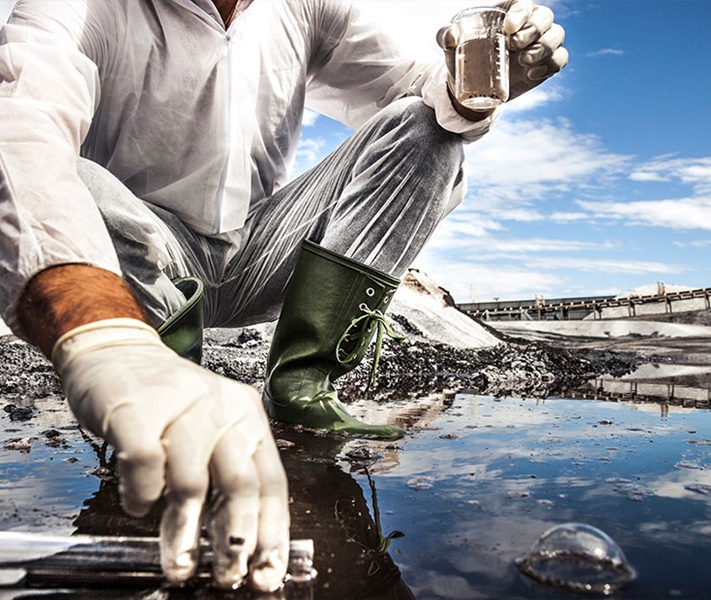Environmental Insurance
Our environmental practice is dedicated to understanding where environmental mitigation or risk transfer is needed; from the obvious to the obscure to ensure your insureds are protected. With expertise in industries as diverse as Manufacturing, Construction, and Healthcare, we understand where your clients are vulnerable to environmental losses and are focused on bringing you innovative solutions.

Environmental Insurance
Our environmental practice is dedicated to understanding where environmental mitigation or risk transfer is needed; from the obvious to the obscure to ensure your insureds are protected. With expertise in industries as diverse as Manufacturing, Construction, and Healthcare, we understand where your clients are vulnerable to environmental losses and are focused on bringing you innovative solutions.

Tailored coverage to meet your insureds unique needs.
In-house environmental programs + exclusive products
Proprietary products + programs
Amwins develops data-backed products and programs, ensuring we never fail to meet your clients' niche environmental insurance needs.
Expertise
With Amwins specialty environmental practice, you and your clients have access to experts who get insurance coverage right the first time.
Complex claim advocacy
From designing a proactive claims management plan to engaging on difficult and complex claims, Amwins supports our clients at the moment they need us most.
$479M
annual premium placements
175
environmental insurance professionals
320
environmental market relationships
Environmental insurance resources + insights
Stay up to date on emerging industry trends and topics.
Environmental Insurance Claims, Part 1: Examples that Can Lead to a Loss
Demolition Contractor – Asbestos
- During the demolition of a portion of a museum, a contractor inadvertently disturbed unknown asbestos that had been contained in the floor tiles. The asbestos contaminated other areas of the museum, forcing closure during the remediation. The demolition contractor was held responsible for the clean-up costs and business interruption.
- A subsurface drilling contractor caused the release of raw sewage into both the soil and groundwater after failing to identify a sewer line before drilling. The clean-up included the excavation of several tons of impacted soil and caused a number of nearby businesses to be shut down for a few days after their basements filled with sewage. Substantial claims for business interruption and clean-up costs were filed.
Drywall Contractor – Mold
- A drywall contractor was hanging new drywall at a construction project when an employee accidentally drilled through a small water pipe located behind the wall. The drywall contractor did not realize the leak occurred and a substantial amount of mold grew between the walls before anyone noticed. The drywall contractor was held responsible for clean-up of the mold, as well as defense of third-party bodily injury claims.
- While installing new electrical lines in a historic building, the contractor used a hole saw to cut through a ceiling. Unknown to the contractor, the saw inadvertently disturbed and released asbestos-containing insulation material. The contractor had to pay clean‐up costs for the asbestos fibers released throughout the building.
- While performing soil removal activities at a Brownfield project, the contractor inadvertently broke an abandoned underground petroleum pipeline with their excavator. Product was released and caused extensive contamination. The contractor was held responsible for the cost to remove the pooled petroleum, the contaminated soil and to confirm that groundwater had not been impacted.
- An excavation contractor spread contaminated soil throughout a site while performing site-preparation work for a new building. The contractor was held partially responsible for exacerbating the contaminated soil.
- A mechanical contractor installed an HVAC system in an assisted living facility for seniors. The system was constructed improperly, which caused mold growth in a portion of the residences. The facility was forced to relocate several patients during the system repair and the renovation of the moldy building materials. A claim for clean-up costs and property damage was filed.
Industrial Cleaning Contractor – Contaminated Water
- An industrial cleaning contractor was hired to clean a former petroleum storage tank previously used for backup power purposes. Plastic sheeting and an associated dike were placed around the tank to prevent the runoff of contaminated rinse water. The sheeting and dike were not properly placed around the tank, allowing a substantial amount of petroleum-impacted wash water to move onto an adjacent property. The adjacent property owner filed suit for property damage and remediation costs related to the contaminated wash water.
Masonry Contractor – Silica
- A masonry contractor, performing a renovation project at a historic building, was sued by employees of a nearby office building who asserted that they were exposed to silica dust coming from the job site. The claimants reported damages for bodily injury, declaring that required measures were not taken to prevent or minimize dust emission during the project.
- A mechanical contractor improperly installed fittings during routine maintenance of a hydraulically driven conveyor system and a subsequent leak was not discovered until the next routine maintenance cycle. The leaking hydraulic fluid migrated into a floor drain beneath the equipment that discharged directly into an adjacent drainage ditch. Property owners adjacent to the site noticed a sheen on the water in the ditch and requested an environmental investigation by regulators. The regulators required clean-up of the spill and the site owner subsequently filed actions against the mechanical contractor to pay for the clean-up costs.
- A child who lived in an apartment building constructed in the 1970s was diagnosed with lead poisoning. The renovation of the building by a painting contractor allegedly caused unsafe conditions for the child, and the child’s parents filed a bodily injury claim against the painting contractor. As part of the claim investigation, an expert was hired and other potential causes for the lead poisoning were discovered. As a result, the painting contractor was held liable for only a portion of the claim.
- A pile-driving contractor punctured an unknown underground storage tank, which resulted in the release of waste oil. The waste oil impacted adjacent soils and forced a work stoppage until the materials could be delineated, excavated and properly disposed.
- A plumbing contractor installing a lawn sprinkler system did not install adequate vacuum breakers on the discharge side of the water supply valves. When pressure in a drinking water system fed by the same water main fell below atmospheric pressure, a vacuum was created which caused back-siphonage of stagnant water from the lawn sprinkler system into the drinking water supply. Several people drank from the water supply and contracted dysentery. Costs were incurred to investigate the issue, purge the system and to provide temporary clean water. Suits followed, alleging bodily injury.
- A roofing contractor applied polyurethane foam along with layers of elastomeric protective coatings to the roof of a commercial building. After completion of the building, workers in the building began to suffer respiratory problems caused by irritants in the coatings. Suits for bodily injury and business interruption were filed against the general contractor and roofing subcontractor.
- A subcontractor working for a street and road contractor performed abrasive sandblasting on a bridge located near a residential area. Lead paint chips and dust from the sandblasting became airborne and drifted onto residential properties, requiring clean-up. The residents filed property damage claims against the street and road contractor and the subcontractor for the dust generated by the subcontractor.
- A steel erection contractor accidently caused a release of diesel fuel at a construction site when a crane operator dropped a steel beam. The beam landed on a small tanker truck that was brought onto the site to refuel other construction equipment. The cost of the emergency clean-up was in excess of $55,000.
- During construction activities, a crane that was used to lift concrete barriers overturned. The accident ruptured the crane’s hydraulic hoses, spilling all its fluid onto the ground. The contractor was required to pay clean-up costs from the spill.
- Inadequate erosion-control measures implemented during construction of a highway overpass abutment resulted in the deposit of petroleum-impacted sediment into a pristine waterway. The street and road contractor was required to pay for clean-up costs and natural resource damages.
- A street and road contractor was hired to repave a 25-mile section of highway. During the project, one of the contractor’s dump trucks accidentally backed into and ruptured a mobile refueling tank and 300 gallons of diesel fuel were released onto the surface and into a nearby storm drain.
- A utility contractor left an unfinished concrete vault open over the weekend. Heavy rains washed away sediment controls, allowing sand and silt to be released from the unfinished vault into the adjacent bay. The contractor was subsequently fined by a regulatory agency for natural resource damage resulting from the release of sediments into the bay.
- A utility contractor was subjected to clean-up costs after vandals opened an on-site mobile refueling tank, causing diesel fuel to be released onto virgin soil.
- Environmental


